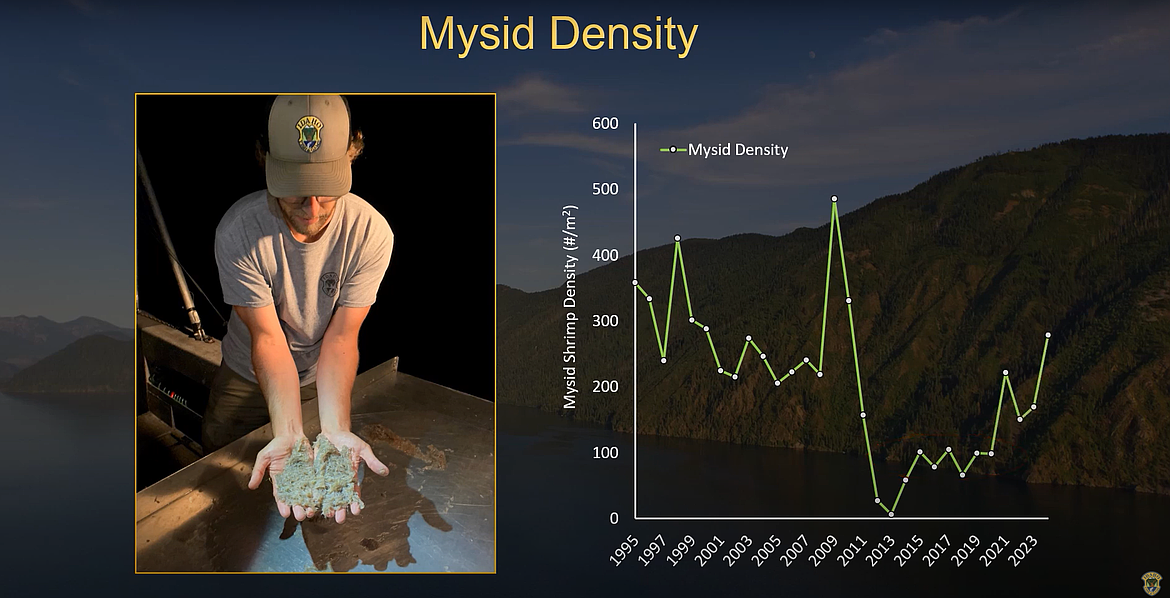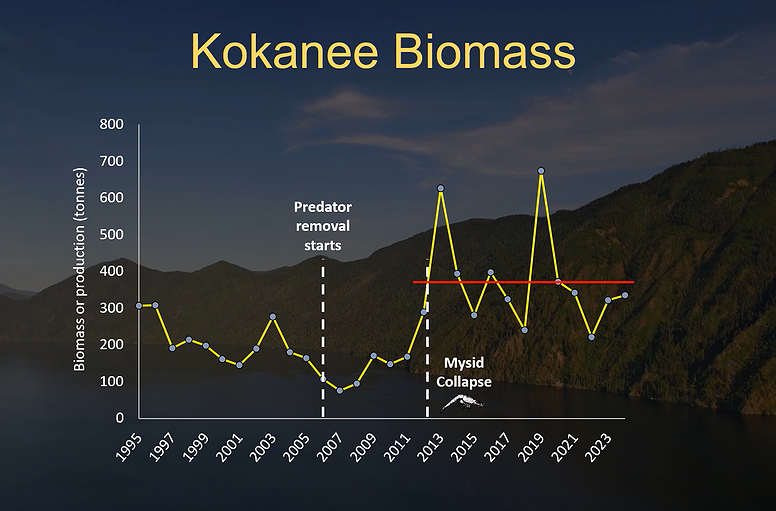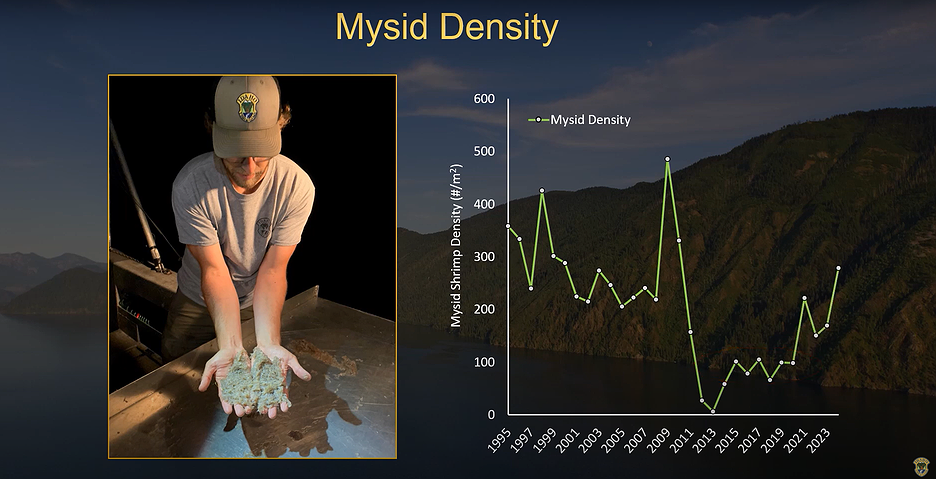What’s the ‘State of the Lake?' — Fishery manager: Lake Pend Oreille angling is ‘about the best it’s ever been’
SANDPOINT — In his annual “State of the Lake” preseason fishery update, Idaho Department of Fish and Game regional fishery manager Andy Dux had good news to share.
“I would argue that fishing on Lake Pend Oreille is about the best it's ever been,” Dux said. “The bar is set pretty high right now, and our main focus is on sustaining the fishery at the current level.”
In a presentation posted to YouTube March 21, Dux cited strong ecological diversity, an abundance of trophy-size specimens and a survey showing high angler satisfaction as evidence of a favorable fishing climate.
The foundation of it all, Dux said, is a recent rebound of kokanee salmon in the lake — a species desired by anglers and a key food source for game fish like rainbow trout and walleye.
“Kokanee are the cornerstone of the Lake Pend Oreille fishery,” said Ryan Hardy, IDFG research biologist. “They really are the number one reason why Pend Oreille is well known for growing such large fish species.”
A long-abundant species, kokanee were knocked down in the 1990s when a surge in Lake Pend Oreille’s mysid shrimp population created an ample food supply for predatory lake trout.
The lake trout boomed; by the end of the century, the species’ population was doubling every 1.5 years. Kokanee counts plummeted, and their scarcity threatened to collapse the seven other fish species that prey on the salmon.
IDFG took action in 2006 by organizing a commercial netting operation to control the lake trout population. That effort, combined with a natural cessation of mysid shrimp abundance, has resulted in a more stable and favorable fishing climate.
“We've moved out of a recovery phase,” Dux said. “It's now performing at an incredible level.”
Today, IDFG is focusing on another pair of non-native predators: walleye and northern pike.
Both species have been shown to prey on kokanee and have become more abundant in Lake Pend Oreille. To control the growth, IDFG initiated a walleye-netting program in 2018 and has begun catching a subset of the population and releasing them with $1,000 reward tags to encourage anglers to target the species.
Additionally, mysid shrimp abundance is rising again; the agency is carefully monitoring how the change will affect lake trout and thus kokanee.
“We expect that a fairly strong kokanee population can be sustained with more mysids present. But this may give us less margin for error,” Hardy said.
Although IDFG is controlling both lake trout and walleye, Dux emphasized that fishing for the species is still viable.
“That's important, because there's a common perception that because we're managing against these species, that fishing for them is poor,” he said.
“In fact, that's not the case — there's very good fishing opportunity being provided by these fish,” Dux added. “That's going to continue in the future, because eliminating their populations just isn't feasible.”





